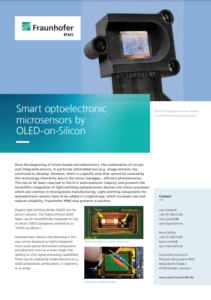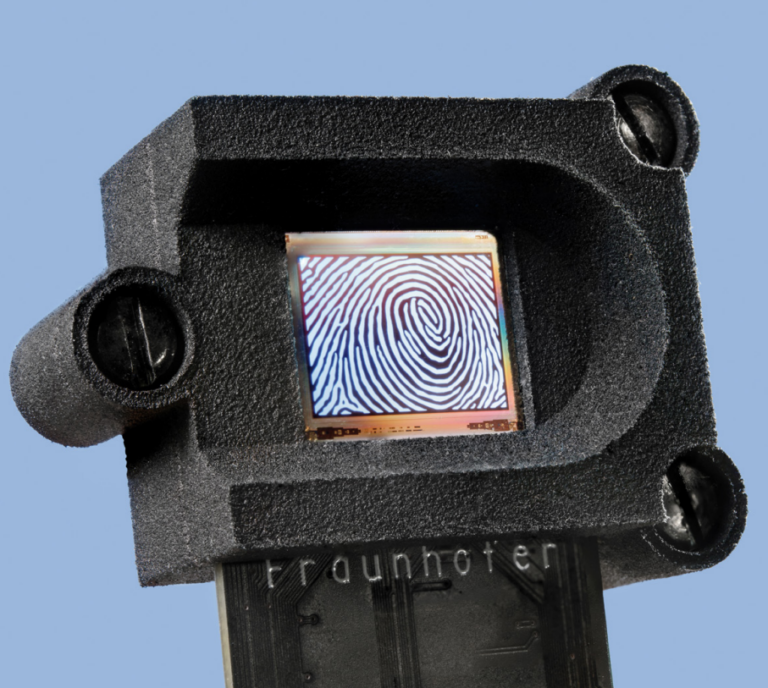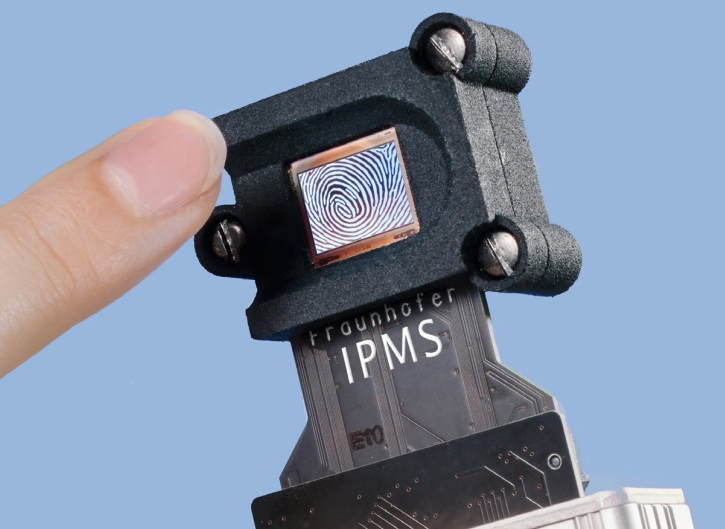Since the beginning of silicon-based microelectronics, the combination of circuits and integrated sensors, in particular photodetectors (e.g. image sensors), has continued to develop. However, there is a specific area that cannot be covered by this technology inherently due to the silicon bandgap – efficient photoemission. This has so far been reserved to the III-V semiconductor industry and prevents the monolithic integration of light-emitting optoelectronic devices into silicon processes which are common in microsystems manufacturing. Light-emitting components for optoelectronic sensors have to be added in a hybrid way, which increases cost and reduces reliability. Fraunhofer IPMS now presents a solution.
Organic light emitting diodes (OLED) are the perfect solution. The highly efficient OLED layers can be monolithically integrated on top of silicon CMOS backplanes (referred to as “OLED-on-Silicon”).
Optoelectronic devices manufactured in this way can be designed as highly-integrated micro-scale optical illumination components and detection units on a smart single chip (adding on-chip signal processing capabilities). These can be realized by single elements (e.g., OLED-photodiode combination), in segments, or as arrays.
Perspective
Based on OLED-on-silicon technology, we anticipate a new generation of optoelectronic components with the following advantages:
- Monolithic OLED integration
- Real solid-state device (no moving parts, no fluids, …)
- Reduced number of system components
- Lower size, weight and costs of the system
- Highly precise optical adjustment of the OLED emitter with respect to the integrated photodiodes
- Freely selectable shaped and designed OLED-on-silicon light sources allow new approaches in dimensional sensors
- Wafer level integration of beam-steering micro-optics
Further exploitation opportunities of OLED-on-Silicon optical sensor technology beyond the scope of this project can be expected, e.g., single-chip reflection light barriers, optical sensors requiring embedded illumination (slope sensors, stray light sensors, wave front sensors, single-chip optical heads for 3D shape detection by patterned illumination, …), lab-on-chip modules with embedded microfluidics, excitation and sensors, optical fingerprint sensors, chip-to-chip communication and OLED-based print heads. This shows the broad market potential of this new technology and devices in several areas apart from biomedicine and biotechnology (including pharmacy), such as mechanical engineering, telecommunication, or automotive.
Development offer
- OLED-on-Silicon device integration
- R&D in OLED-based integrated optoelectronics
- Electronics design (backplane (integrated circuitry / ASIC, control, interface, …)
- System design (sensor electronics, packaging, module)
- Product development and qualification
- Pilot production (small to medium volume fabrication




